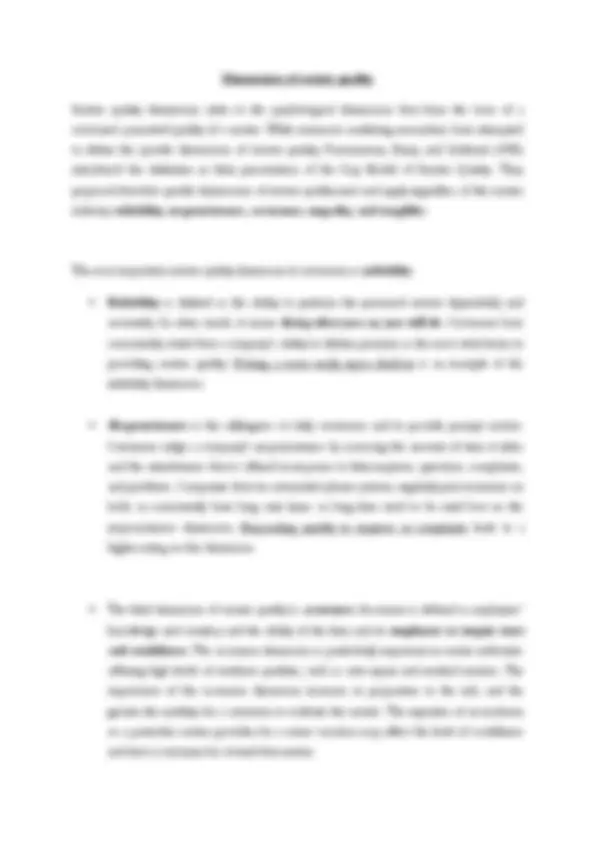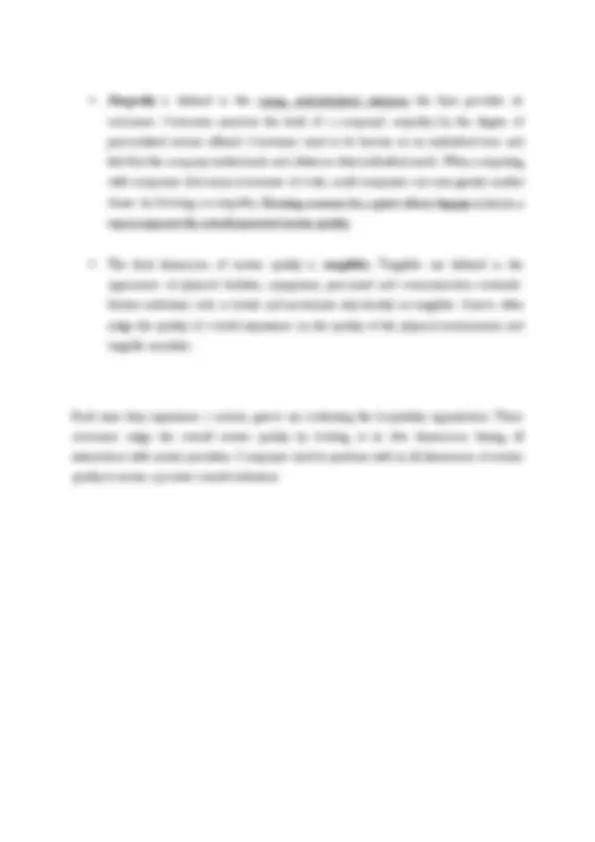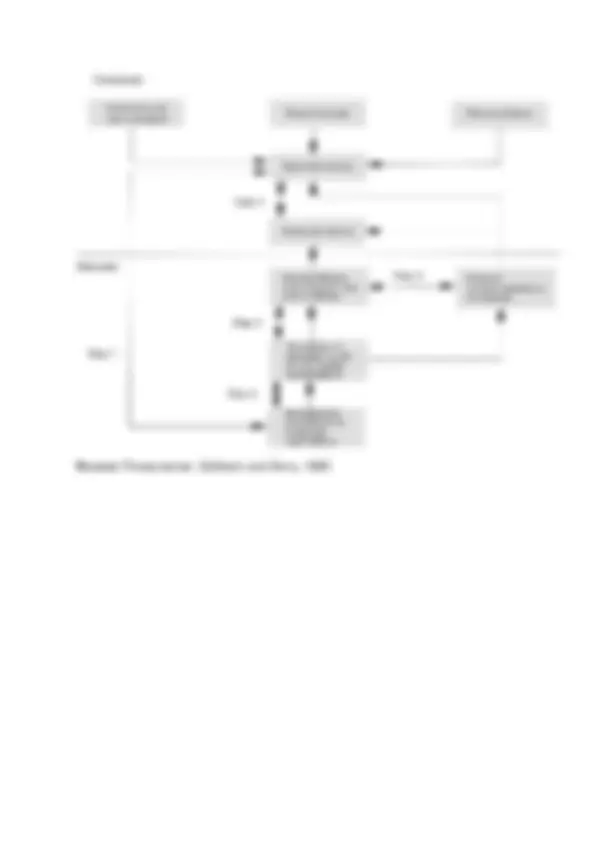





Study with the several resources on Docsity

Earn points by helping other students or get them with a premium plan


Prepare for your exams
Study with the several resources on Docsity

Earn points to download
Earn points by helping other students or get them with a premium plan
Community
Ask the community for help and clear up your study doubts
Discover the best universities in your country according to Docsity users
Free resources
Download our free guides on studying techniques, anxiety management strategies, and thesis advice from Docsity tutors
Customers have expectations for service experiences and they use them to measure against the perceived service performance in their judgment of service quality.
Typology: Study notes
1 / 5

This page cannot be seen from the preview
Don't miss anything!




Gap model of service quality
The Gap model of service quality was developed by Parasuraman, Berry and Zeithaml (1985), and more recently described in Zeithaml and Bitner (2003). It has served as a framework for research in services marketing, including hospitality marketing, for over two decades. The model identifies four specific gaps leading to a fifth overall gap between customers’ expectations and perceived service.
The five gaps
x Customers have expectations for service experiences and they use them to measure against the perceived service performance in their judgment of service quality. It is essential, then, that managers determine what those expectations are when designing the service. The first gap in service quality occurs when management fails to accurately
the difference in customer expectations and management’s perception of customer expectations. Hotel managers, for instance, must know and understand what their guests expect from their stay, including all tangibles (the room, amenities, lobby features) and intangible components (availability of additional services, ease of check-in and check-out procedures). The size of the gap is dependent on: x the extent of upward communication (from customers to top management), x the number of layers of management, x the size of the organization, x and most importantly, the extent of marketing research to identify customer expectations.
design specifications match up to management’s perception of customer expectations. The extent of this gap is dependent on management’s belief that service quality is important and that it is possible, as well as the resources that are available for the provision of the service. A restaurant manager may understand customer expectations for being served within 20 minutes of ordering, but may not have the resources or the appropriate number of staff to insure that speed of service.
x Gap 3 represents the variation in service design and service delivery. Known as the
service. Since individuals perform the service, the quality may be affected by such factors as skill level , type of training received , degree of role congruity (agreeability) or conflict , and job fit. Some service providers (i.e. waiters, front-desk staff) do not have a high service inclination , despite training. Service recovery efforts along with extent of responsibility and empowerment also affect the size of this gap.
x The process is further complicated by the customer’s participation in the service encounter. A customer may make a special request for a room type different from the one originally reserved, or request a menu item after the initial order has been completed, making it more difficult to perform the service as intended.
promised to customers, either explicitly or implicitly, and what is being delivered. Hospitality companies use advertising, personal selling, and sales promotion to inform, persuade, and remind guests about its products and services. Showing beautifully appointed hotel rooms, refreshing swimming pools, and luxurious lobby areas in an advertisement communicates to the target customers. The extent of communications between the company and the advertising agencies will affect the size of the gap. Over-promising is commonly responsible for the communication gap. Each gap has a cumulative effect from the preceding gaps.
x Gap 5 is the total accumulation of variation in Gaps 1 through 4 and represents the difference between expectations and perceived service. Furthermore, consumers evaluate perceived service along five quality dimensions.
customers. Customers perceive the level of a company’s empathy by the degree of personalized service offered. Customers want to be known on an individual basis and feel that the company understands and addresses their individual needs. When competing with companies that enjoy economies of scale, small companies can earn greater market shares by focusing on empathy. Showing concern for a guest whose luggage is lost is a way to improve the overall perceived service quality.
appearance of physical facilities, equipment, personnel and communication materials. Service industries such as hotels and restaurants rely heavily on tangibles. Guests often judge the quality of a hotel experience on the quality of the physical environment and tangible amenities.
Each time they experience a service, guests are evaluating the hospitality organization. These customers judge the overall service quality by looking at its five dimensions during all interactions with service providers. Companies need to perform well on all dimensions of service quality to insure a positive overall evaluation.